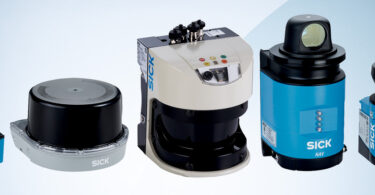How Intelligent Vision Assists Various Roles at an Organization
Ecommerce comes with many expectations. No consumer wants a damaged package or incorrect order delivered to them. For that reason, companies engaged in ecommerce fulfillment know that they need to be ready to prove that what they shipped was correctly labeled and in good condition. For operations managers, the expectation is that warehouse operations will be kept as efficient as possible, even with all the complexities involved in processing and shipping small ecommerce orders.
So how do you meet these expectations? Well, the short answer is that it’s not easy, but by using intelligent, vision-based readers and associated sensors, you can capture the information you need to help address both external customer service expectations, and internal marching orders for efficiency. Vision enables benefits that help with various shipper responsibilities, including:
- From a customer service or product management point of view, the ability of vision-based readers to capture and archive digital images of read/ scan events allows the organization to prove it shipped out undamaged, correctly labelled products. This same digital repository of read events, when combined with software such as SICK’s Package Analytics, allows for analysis of no reads so that the organization can keep no read event or misrouted products to an absolute minimum.
- For operations managers in warehousing and logistics facilities, intelligent vision readers and associated sensors such as photo eyes or vision-based arrays can pinpoint the location and gaps between bags or boxes moving on automated machinery such as conveyors or sortation systems. Precise and accurate sensing of leading and trailing edges of products, and pinpoint control over gaps between items or the presence of product on assets like tilt tray sorters helps ensure that high-end automation is fully utilized. This helps operations managers meet throughput goals with existing materials handling systems.
- Operations managers also benefit from how intelligent vision readers and sensors can correctly route incoming goods as soon as they enter a facility. Digital identification of the full range of package attributes such as dimension, weight, labelling, and whether it can be reliably conveyed and sorted under the normal material flow, or should be dealt with as a non-conveyable, adds efficiency to materials handling.
- Quality control and compliance teams can use the high-resolution images generated by vision readers to investigate problems with labels or packaging with incoming shipments, with no reads or misrouted goods in the facility, or to help ensure outbound goods are correctly labelled and in good condition.
- For plant engineers, control engineers, or maintenance personal who are tasked with maintaining and reconfiguring bar code reading and automated materials handling systems, vision-based readers support greater ease of use because they have a broader, more flexible field of view than laser-based equipment. So as bar code labels or other package attributes change, there is less need to reconfigure the product identification infrastructure to capture code data.
- For IT leaders and managers, SICK’s solutions and integration services ensure that digital images can be easily networked and stored within your IT infrastructure. Added process power at the reader and sensor level also allow for an edge computing approach in which some logic can be processed and executed locally at the device level, while other digital image data can be sent to the Cloud for storage and potential analysis using artificial intelligence techniques. From the IT perspective, intelligent vision means captured data is easy to communicate via standard networks and comes with prebuilt software options for package analytics.
- For senior executives and company leadership, the move to intelligent vision-based readers supports the strategic need to excel at ecommerce fulfillment in a cost-efficient way. Not only are vision-based readers necessary for 2D codes, the digital images and package attributes they capture are able to reduce no reads and maximize utilization of automated materials handling assets. Digital data repositories fed by intelligent vision also set a foundation for deep learning and analysis of material handling processes.
Regardless of your role in an organization, intelligent vision sets the table for a range of process improvements, sums up Tom Wik, SICK USA's national product manager for vision and identification.
“It all comes back to having more information,” said Wik. “It’s not just being able to read a code, but having knowledge of a range of package attributes, such as whether the label applied correctly, as well as solutions that integrate the dimensioning, so you can properly route and handle a product. At the end of the day, the level of digital, visual information is going to allow organizations to be more efficient in the way they produce, handle and ship their products.”
Looking for more information about intelligent vision solutions? Contact a SICK representative today!





